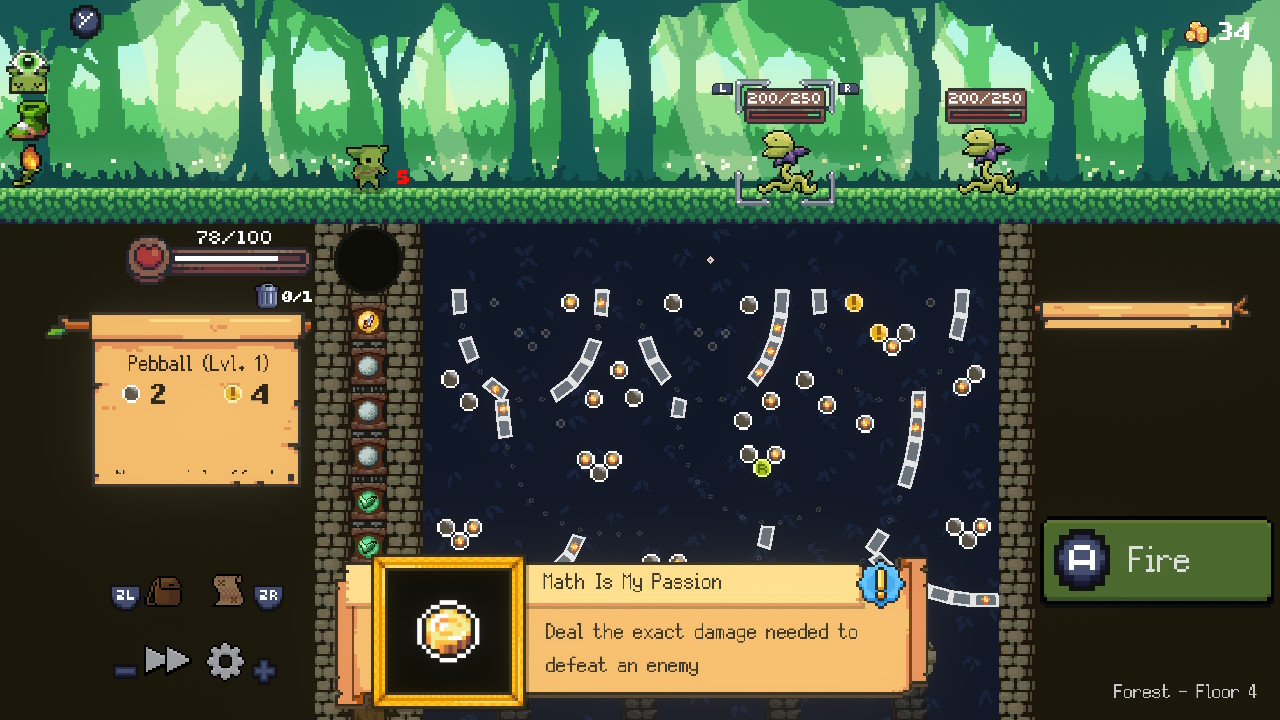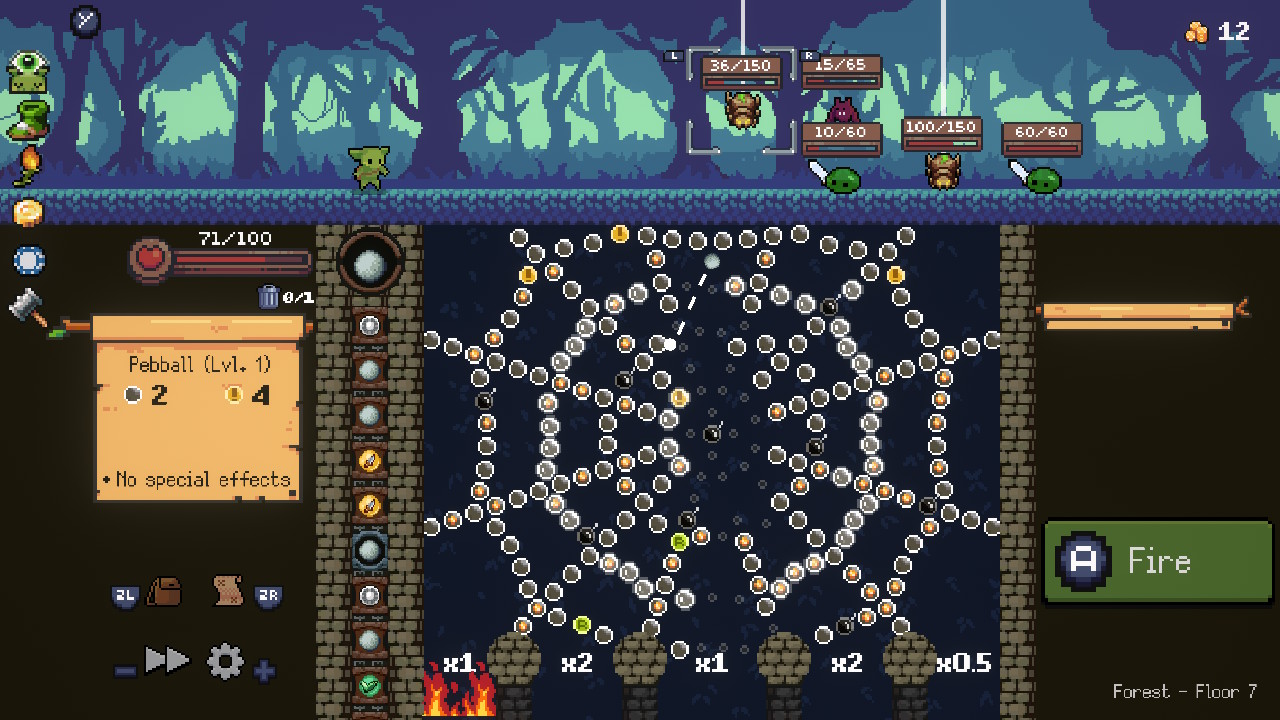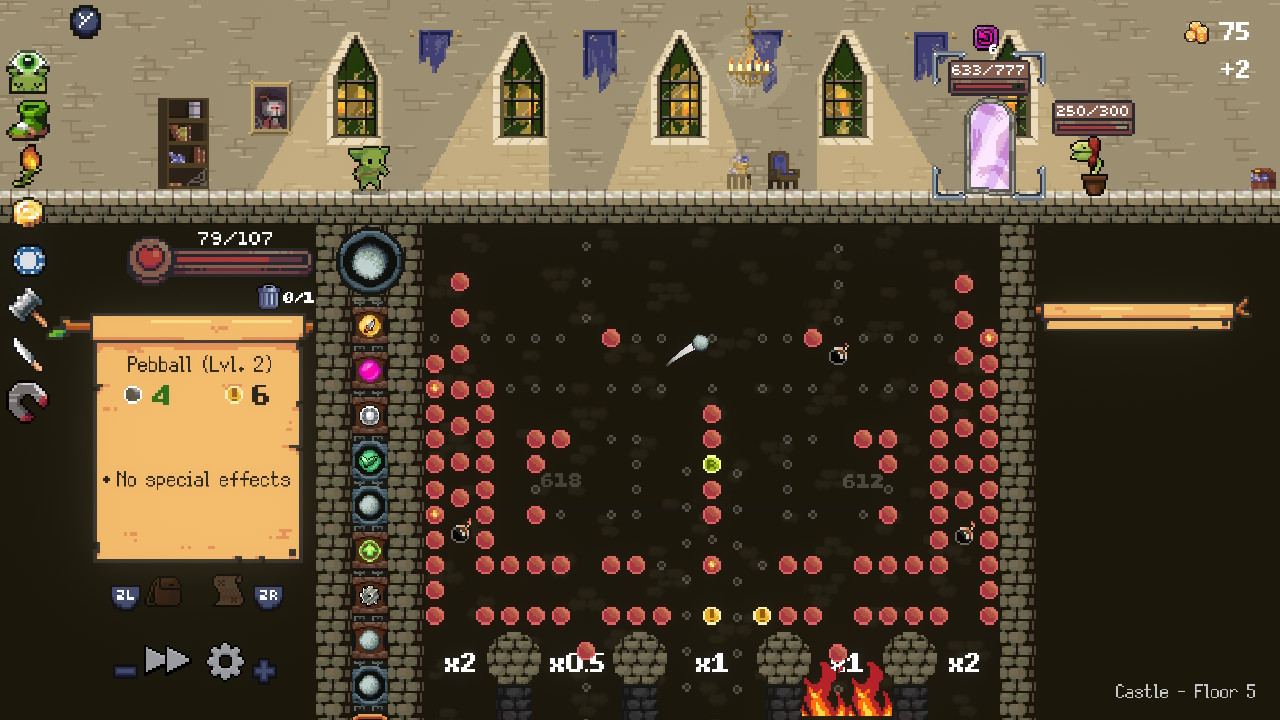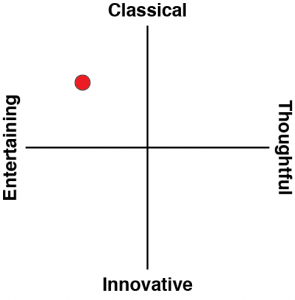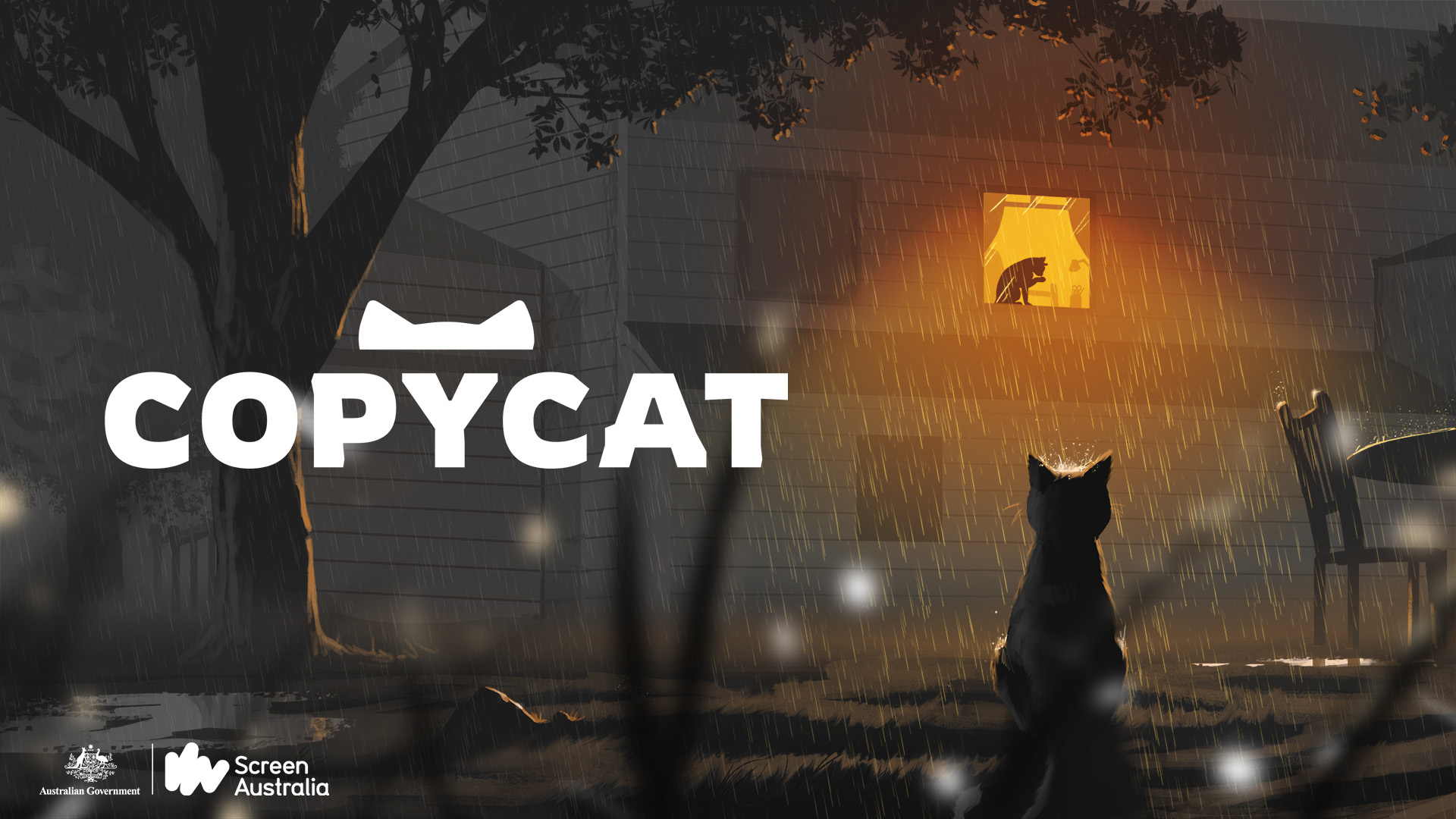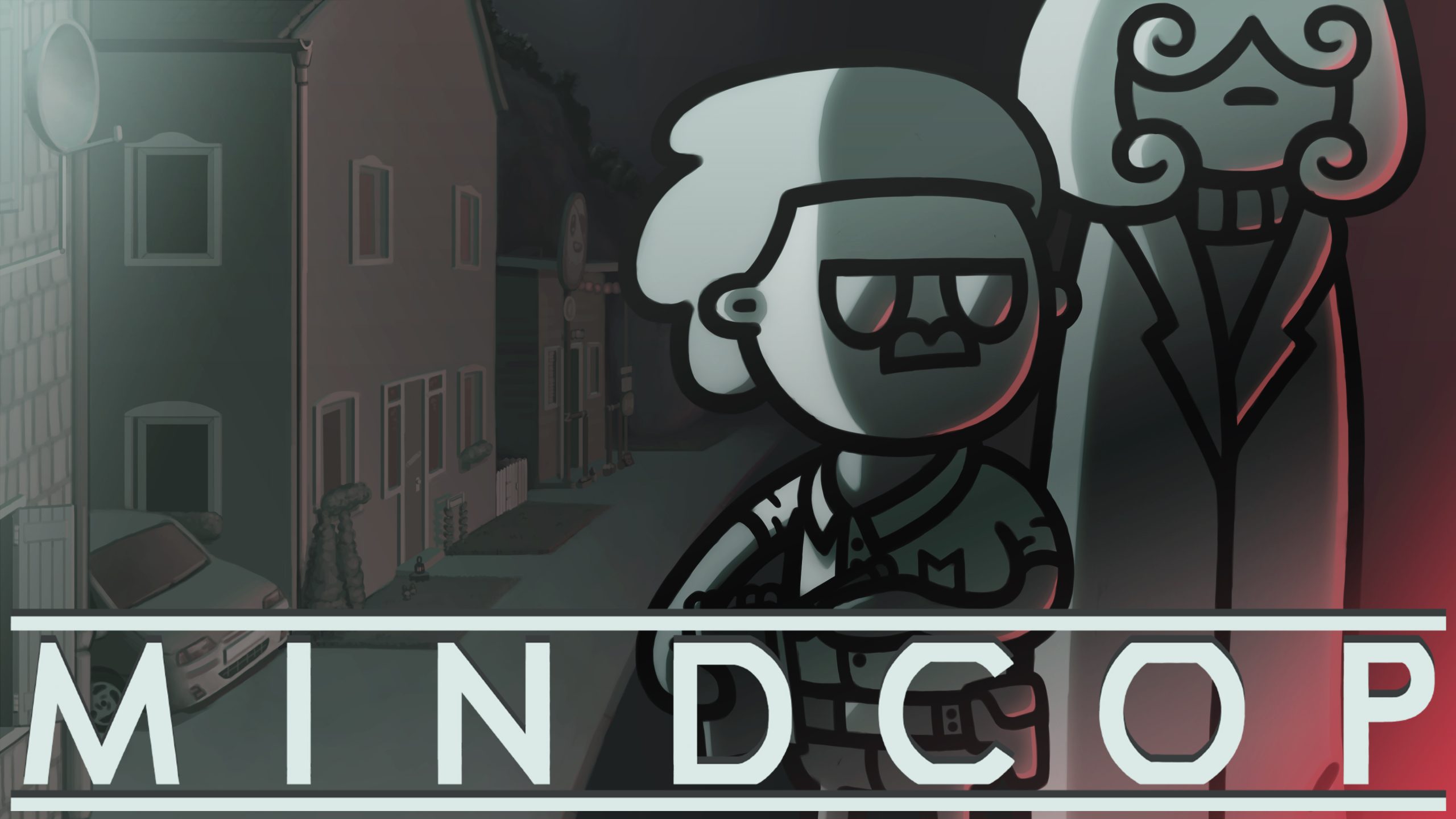It’s been a while since I’ve thought about Popcap’s classic Peggle – and that’s not helped by the series being dormant since 2013 – but I’m willing to bet that back when I did, I never once considered that what Peggle, that classic and relaxing mix of Pachinko and bagatelle (the precursors of pinball) games needed were bloodthirsty orcs throwing rocks at my head.
Because, you know, that would sound insane.
Insane it may be, but it’s also the basic premise behind Peglin. You’re cast as a tiny Goblin – strictly speaking a Peglin – who like most Goblins (sorry, Peglins), isn’t treated well in the fantasy world in which it lives. It’s always about the dashing heroes and heroines, and never really about the little green creatures, is it?
Kermit was right all these years, it’s just not easy being green. In the case of Peglin, nasty dragons have been stealing all your gold for… well, forever, and it’s time to get some cold, hard REVENGE… and also all your gold back. Kermit would not approve, though clearly Miss Piggy would. But I digress.
This isn’t fantasy revenge tale where you’re going to go in swinging a sword, because, well, you’re a goblin. They’re not known for their swordplay, now are they?
Instead, you’ll use the magical powers of orbs bouncing off pegs to generate damage to fight your way through to the dragon’s lair and overall victory.
Peglin mashes together the aiming and ball bouncing of Peggle with light roguelike dungeon crawling elements, so instead of trying to clear each field of its pegs, you’re instead building up damage for attacks via hitting specific pegs or using a wide array of special balls that convey bonuses to attacks, or defense.
Specific pegs will trigger other pegs to provide critical damage or refresh all the pegs in a field so you can keep on battling. Survival in Peglin becomes a balancing act of hitting the right pegs at the right times, using the power of your orbs optimally and keeping your health up, either through buying more health at the end of each level or using specific balls to bolster your armour or replenish your vitality.
While there can be some elements of luck involved, careful aim is still central to playing and enjoying Peglin. It does nail that feeling of success when you pull off a shot that maximises your damage or takes down multiple foes in one go, though it’s not quite as obviously nudging you along to success the way that Peggle’s sometimes-ropey rubber-banded physics tended to. If you play Peglin without thinking about your shots, you will fail, and often quickly.
Each of the game’s maps is randomly generated, but once you’ve defeated all the foes in a location – or dealt with its other narrative challenges, most of which will gift you powerups or cost you health – and sometimes both – you do get to “choose” your path. If you do recall Peggle, you might remember that at the end of each level, you could boost your score with a final shot that would bounce around before falling into a specific hole at the bottom that gave you its score. Peglin’s developers have rolled with that idea, but instead of extra points, it instead determines where you’re next going on the board. Want to avoid battles and get all the gold? Better aim for the chests rather than the skulls… but also hope that the chests aren’t booby trapped too.
Peglin starts off pretty easy, but if you’re not careful about managing your powerups or choosing your routes carefully, you’ll hit some boss fight walls that can feel a little frustrating, especially as the game’s more complex boards do get a little chaotic and unpredictable with bounces in some situations. Still, Peglin is a fairly relaxing game for the most part, and one that can be deeply enjoyable once you get into its groove of mixed puzzling and fantasy combat.
Visually, the pixel art style works well enough, and it helps on the Switch not being that complex a title so load times are minimal. Because your foes only respond after your attacks, there’s always time to stop and plan out shots around how each orb’s power works – once you wrap your head around that – and so it’s a pretty easy drop-in-drop out kind of game. Not everything needs to be a 100+ hour epic, you know?
